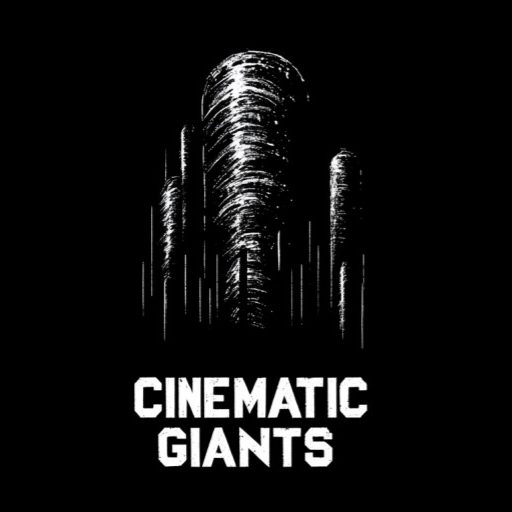The Evolution of Cinematic Music: From Classical to Modern Soundtracks
(A Cinematic Giants Exploration)
Cinematic music has always played a critical role in shaping the moviegoing experience, underscoring emotions and intensifying narrative moments in films. From the early days of cinema to the epic soundtracks of today, film music has undergone a profound evolution. On this journey, many remarkable composers have defined the cinematic music landscape, adapting to changing technologies, cultural shifts, and creative approaches. At Cinematic Giants, we dive deep into how the soundtracks of films, whether timeless or modern, are integral to their success, and how the evolution of cinematic music reflects the broader history of film itself.
Early Film Music and Classical Influences: Setting the Stage for Cinematic Giants
In the silent film era, music was as crucial as the images on screen. As there were no spoken words, live orchestral accompaniments provided audiences with emotional guidance throughout the viewing experience. Early film scores borrowed heavily from the classical tradition, with composers such as Max Steiner, often regarded as the father of modern film music, introducing bold new approaches. At Cinematic Giants, we celebrate these early pioneers who laid the foundation for the emotional power of film scores.
Steiner’s landmark score for King Kong (1933) set the standard for using music to drive the film’s narrative. His use of leitmotifs in this score would go on to shape cinematic music for decades. This technique of using recurring musical themes for characters or ideas became a staple in film scoring, notably seen in later works like John Williams’ Star Wars (1977) and Indiana Jones (1981).
The Golden Age: Orchestral Film Music’s Glory Days
The Golden Age of Hollywood, spanning the 1930s to the 1950s, saw film scores grow into full orchestral works. At Cinematic Giants, we examine the lush orchestration and grandiose themes that dominated this period. Composers like Erich Wolfgang Korngold and Franz Waxman composed sweeping scores that complemented the larger-than-life action onscreen. Korngold’s The Adventures of Robin Hood (1938) is a prime example of a score that captured the adventure and excitement of its story, and we look at how these powerful pieces became the defining sound of early Hollywood cinema.
Bernard Herrmann’s collaborations with Alfred Hitchcock pushed the boundaries of what could be achieved with minimalistic scores, as seen in Psycho (1960). The sparse, unsettling strings in the famous shower scene redefined tension in film music and marked a departure from the bombastic orchestras of earlier eras.
Moving Beyond the Orchestra: Minimalism and Electronic Innovation
In the 1960s and 1970s, filmmakers and composers began to embrace experimental methods, leading to a transformation in film scoring. At Cinematic Giants, we trace how composers like Bernard Herrmann and others began to experiment with minimalist techniques that reduced the orchestra’s role in favor of more sparse, emotive soundscapes. This shift was a response to changing tastes in both music and film.
The 1980s also saw the rise of electronic music, marking a new era of cinematic sound. Composers such as Vangelis and Wendy Carlos, with their groundbreaking work in Blade Runner (1982) and A Clockwork Orange (1971), brought synthesizers and electronic instruments to the forefront, forever altering how film scores could sound. At Cinematic Giants, we examine the influence of these electronic pioneers on the genre, exploring how their use of synthetic sound in films opened new possibilities for film composers everywhere.
Modern Cinematic Scores: Innovation Meets Tradition
Today, cinematic music reflects an exciting fusion of traditional orchestration, electronic music, and cutting-edge technologies. Composers like Hans Zimmer, whose work on The Dark Knight trilogy and Inception (2010) continues to influence the genre, blend the best of both worlds. At Cinematic Giants, we regularly feature articles that break down how composers use modern tools to experiment with new sound techniques while retaining the emotional power of orchestral roots.
Zimmer’s innovative use of sound in Inception, incorporating both electronic pulses and orchestral swells, demonstrates the ongoing evolution of film music. His influence has been so significant that his compositions are now considered a blueprint for many modern composers. At Cinematic Giants, we appreciate the way Zimmer and his contemporaries challenge traditional boundaries in film scoring, offering new experiences for viewers.
The rise of composers like Junkie XL, who contributed to the dynamic soundtrack of Mad Max: Fury Road (2015), and Brian Tyler, known for his work on the Fast & Furious franchise, highlights the increasing fusion of orchestral elements with modern sound design. These scores bring energy and edge to the films, using everything from electronic beats to full orchestras to create a cohesive sound that drives the action forward. At Cinematic Giants, we explore the role of these modern composers in transforming the way cinematic music is perceived.
The Future of Cinematic Music: What Lies Ahead
As technology continues to advance, the future of cinematic music holds even greater potential. With the growth of digital sound design, artificial intelligence, and immersive formats like 3D sound and VR, composers are exploring new ways to integrate music with film. At Cinematic Giants, we’re excited about the possibilities of AI-generated music and interactive film scores, which may allow for even more dynamic and personalized viewing experiences.
The future of cinematic music may also bring further global influences, with composers from diverse backgrounds continuing to shape the soundtracks of tomorrow. As Cinematic Giants keeps track of these emerging trends, we can expect to see even more experimentation and cross-cultural collaborations in the years to come.
Film music continues to evolve in ways that will keep filmgoers captivated for years to come. Cinematic Giants will continue to cover these developments and provide in-depth analyses on the most influential composers and soundtracks, offering insight into how film scores help define the emotional landscape of cinema. The role of film music remains as important as ever, and as technology advances, so too will the artistry behind it.
